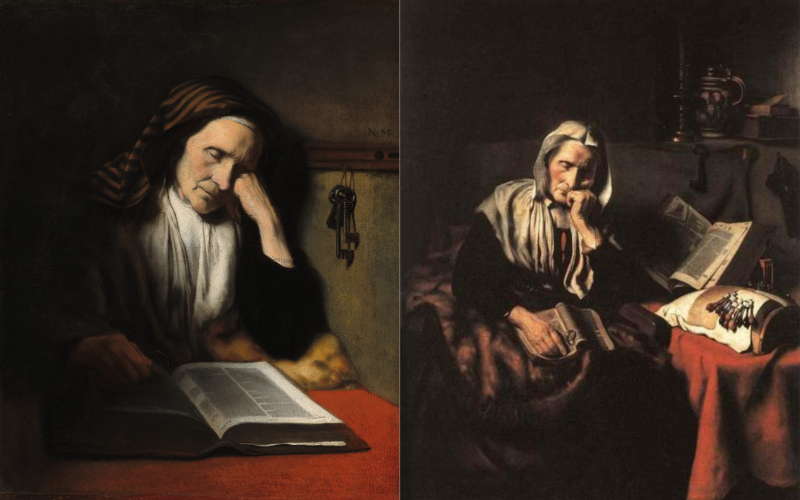Nicolaes Maes, a Dutch artist, painted An Old Woman Dozing in oil on canvas around 1656. It is a work of art from the Dutch Golden Age and is kept in the collection of the Belgian Royal Museum of Fine Arts.
Nicolaes Maes started out as a painter of religious subjects and genre scenes before becoming one of the greatest portrait artists of the second half of the seventeenth century. Rembrandt van Rijn (1606–1669), with whom he studied in Amsterdam between 1646 and 1653, left his mark on these early works. Maes frequently depicted a woman dozing off and avoiding her responsibilities in her paintings.
The subtle signs of sloth are the household keys dangling aimlessly from a nail in the wall, signifying worldly responsibilities, and the opened Bible remaining unread, indicating that she has closed her eyes to the word of God.
A lace pillow for bobbin lace is on the table next to the woman who is dozing off while reading a book. Maes painted lace pillows with their owners, which was one of her favorite subjects.
Hofstede de Groot described this painting in his journal in 1914, writing; “99. AN OLD WOMAN DOZING OVER HER BOOK. She is in black with a white cap. She sits on a chair facing the spectator. Her spectacles are in her right hand, which rests on a Bible in her lap. Her head rests on her left hand ; her elbow is on the table with a red cover beside her. On the table are a lace-pillow and a Bible open at the book of Amos. On a shelf on the wall are a jug and a candlestick with a candle in it. Canvas, 54 inches by 41 1/2 inches. Acquired from Gauchez, Paris, 1885, for the Museum (for 66,000 francs). In the Brussels Museum, 1908 catalogue, No. 279.”
Numerous of the accessories Maes used in this painting—including his geriatric model—recur in other works from the same era. Although her identity is unknown, she might be a relative. Maes may have emulated Rembrandt and used his mother to represent older women in his moralizing paintings from the middle of the 1650s.
After Maes returned to Dordrecht, where he had wed the preacher’s widow in 1654, he produced these instructional works. Since Dordrecht was a Calvinist stronghold, there was probably a ready market for artwork that emphasized moral responsibility.


